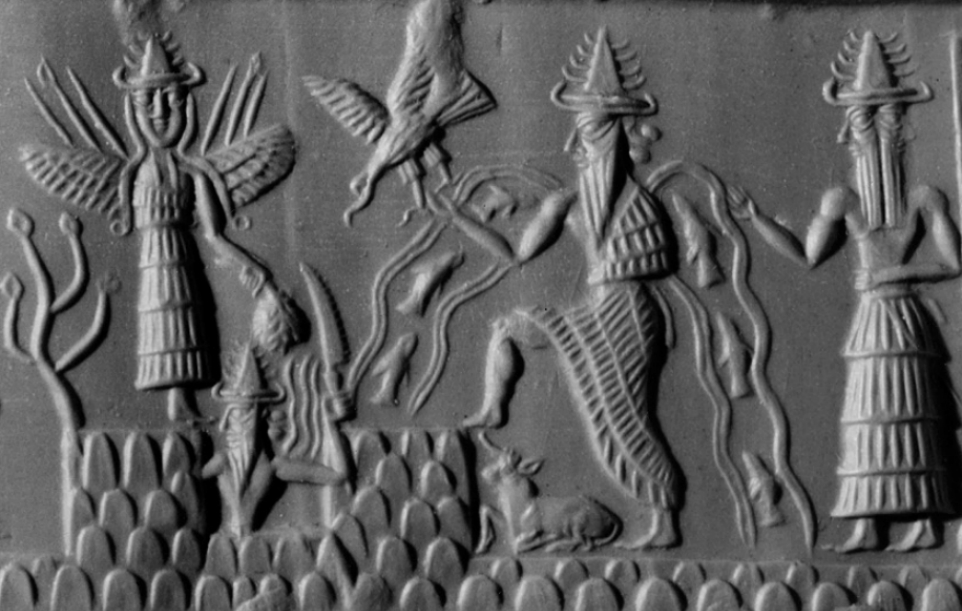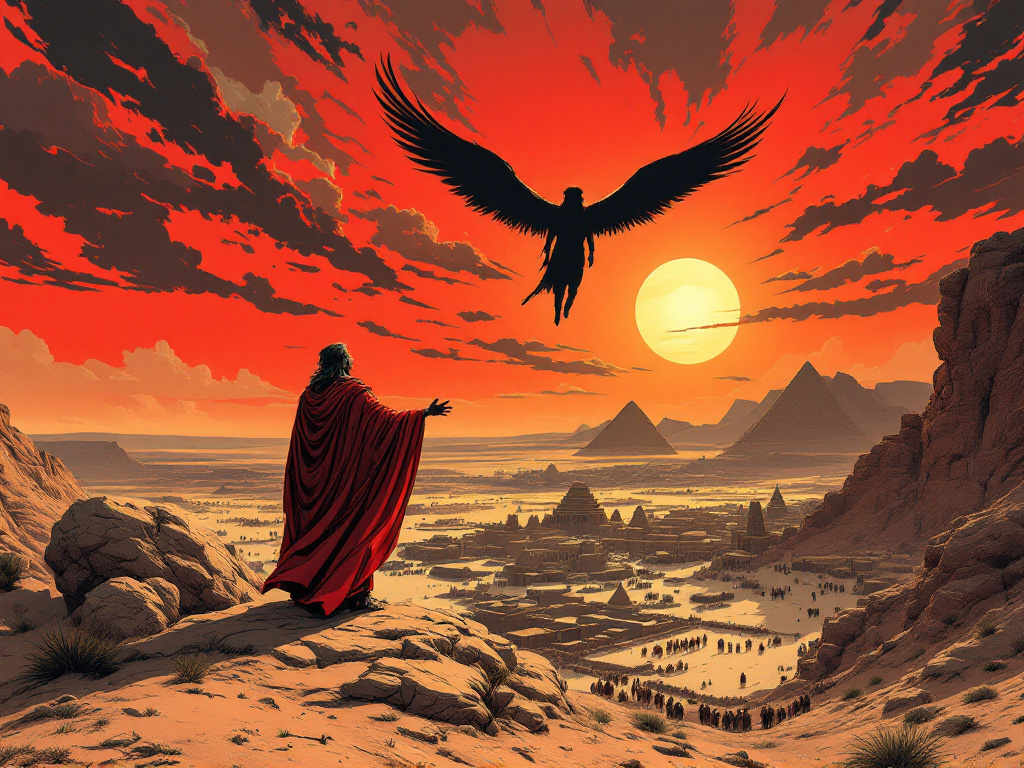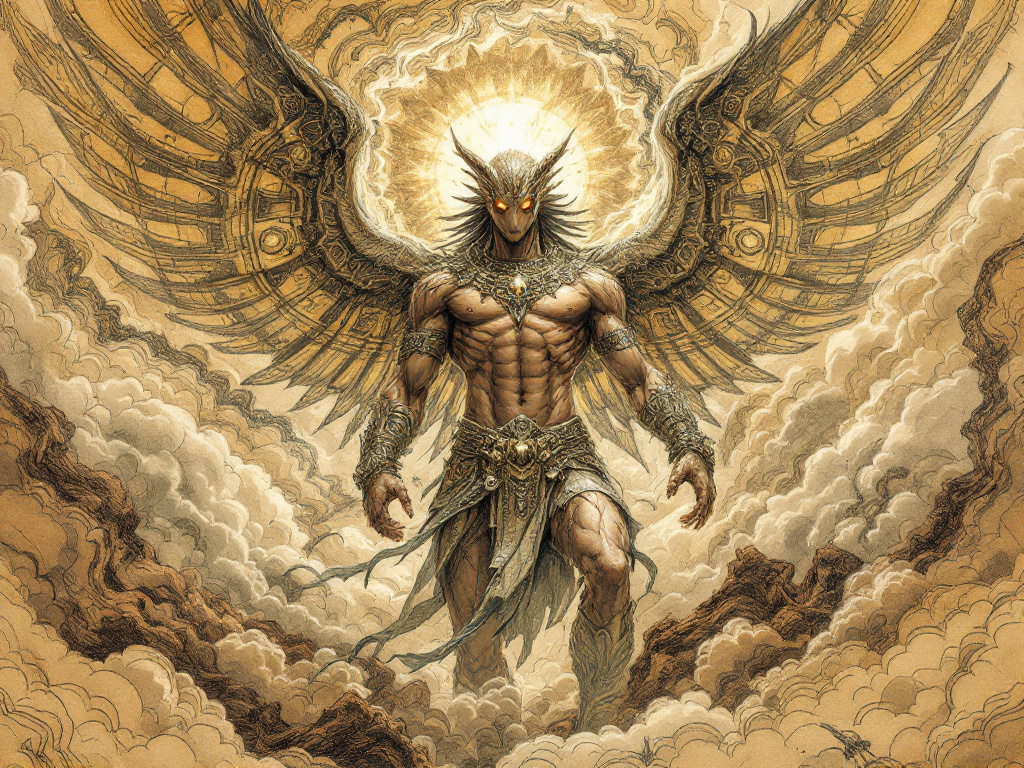The Annunaki: Myths, Legends, and Ancient History
The Annunaki are among the most fascinating and mysterious figures in ancient Mesopotamian mythology, a region that saw the rise of the first great human civilizations. The term Annunaki (meaning "those who came from the sky") appears in Sumerian and Babylonian texts, referring to a group of deities that played a central role in the religions and beliefs of ancient Mesopotamia.
These gods, described as powerful beings with extraordinary abilities, were worshipped throughout the Sumerian and Akkadian territories, as well as in later Babylonian and Assyrian traditions. Although their nature and role were often ambiguous and varied, one thing is certain: the Annunaki represent a central aspect of Mesopotamian cosmology.
Origins and Role in Sumerian Mythology
The earliest traces of the Annunaki date back to the Sumerian civilization, which between 4000 and 2000 BC developed one of the first forms of writing: cuneiform script. In Sumerian mythology, the Annunaki are considered the children of Anu, the god of the sky, and represent a class of deities who govern various aspects of the natural and human world. Some texts suggest that the Annunaki were cosmic deities created to administer and maintain the order of the universe.
In the Poem of Enki and Ninmah, for instance, it is told that the gods created humans to help them with hard agricultural and mining work. In this version, the Annunaki are portrayed as responsible for the fate of humanity, yet as divine figures, they observe humans from a certain distance.

Source - Wikipedia
The Annunaki in Cuneiform Tablets: A Deeper Insight
Cuneiform tablets are one of the primary sources that allow us to delve into the world of the Annunaki. Among the most significant works containing mentions of these deities are the Enuma Elish (the Babylonian creation epic) and the Epic of Gilgamesh. In these stories, the Annunaki are often described as powerful and majestic, tasked with establishing cosmic order and interacting with humans.
An emblematic example is the Enuma Elish, where it is told that the god Marduk fights against the primordial chaos. In this epic, Marduk defeats Tiamat, the goddess of chaos, and creates the world from her body. Although Marduk is the hero in this case, the Annunaki play a role as spectators and participants in the battle, offering their support to the young god.
The Annunaki in Babylonian and Assyrian Texts
With the expansion of the Babylonian Empire and the spread of Babylonian religion, the Annunaki pantheon grew and evolved. Some of the key figures in the Mesopotamian pantheon, such as Enki (the god of wisdom) and Enlil (the god of air and storms), are closely associated with the Annunaki.
Even in Assyria, the successor of Babylon, the worship of the Annunaki was predominant, but with characteristics that diverged slightly from the Sumerian tradition. The Annunaki were seen as custodians of destinies, determining the life and death of humans by imposing divine laws.
Sacred Texts and Mentions of the Annunaki: Their Influence on Religious Culture
Beyond the epic works, the Annunaki are mentioned in numerous sacred texts, such as the Laments of the Gods and prayers invoking the favor of the deities. In these texts, the Annunaki are worshipped as protectors of cities and states. For example, in Babylonian temples, rituals were performed to placate the wrath of the Annunaki and ask for their intervention in times of hardship.
The Annunaki in Apocryphal Texts: A Historical Investigation
Although the Annunaki are not directly mentioned in apocryphal texts of the biblical tradition, some scholars have explored possible connections between Mesopotamian legends and biblical narratives, suggesting mutual influences or parallels between the two traditions. In particular, texts like the Book of Enoch and the Book of Jubilees contain references to divine beings descending from the sky and interacting with humanity in ways that resemble Sumerian stories about the Annunaki.
In the Book of Enoch, for example, the fall of the angels, known as the "Watchers," is recounted. These angels teach humans forbidden arts and produce a hybrid offspring. Some scholars believe that these "Watchers" resemble the Annunaki, interpreting them as a biblical version of these Mesopotamian gods.
Also, in the Book of Jubilees, which describes the corruption of humanity by the angels, parallels can be drawn with the Mesopotamian stories of the Annunaki, suggesting a transposition of Sumerian legends into a Jewish religious context.
Moreover, some modern authors, like Mauro Biglino, suggest that the Bible contains veiled references to the Annunaki, interpreting key passages of Genesis through a Mesopotamian lens.

Modern Theories about the Annunaki: Legend or Reality?
In the 20th century, the Annunaki gained new fame due to theories associating them with extraterrestrial visitors. Authors like Zecharia Sitchin proposed that the Annunaki were actually alien beings who came to Earth to colonize the planet and manipulate human evolution. Although these theories have no support in academic research, they have sparked great interest and inspired numerous books and documentaries.
The Annunaki are extraordinary mythological figures whose stories have deep roots in the oldest religious traditions of Mesopotamia. Their influence extends far beyond Sumerian culture, touching upon later traditions like Babylonian and Assyrian beliefs, and even Jewish legends and apocryphal texts. While modern theories about the Annunaki as extraterrestrial beings are intriguing, it is important to consider the historical and mythological roots of these legends to fully appreciate their cultural and religious significance.
For those who wish to explore further, here are some helpful sources:
- Enuma Elish: The Babylonian creation epic. Wikipedia
- Book of Enoch: Apocryphal Jewish text. Wikipedia
- Book of Jubilees: Another apocryphal text. Wikipedia
- Theories of ancient astronauts by Zecharia Sitchin. Wikipedia
- Mauro Biglino and his biblical interpretations. Official site








Leave a Comment